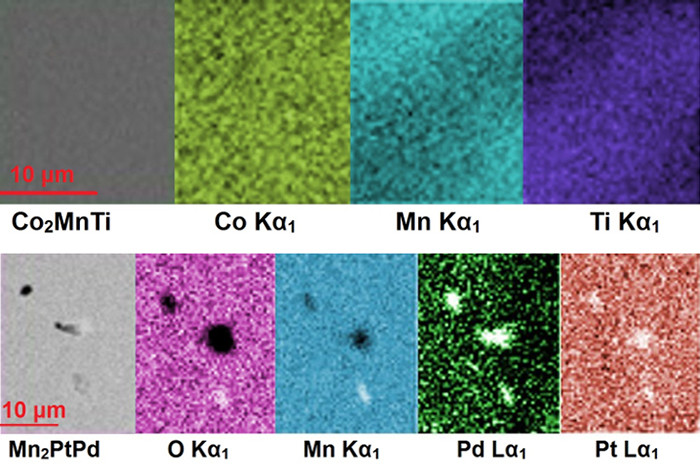By this method, two new types of magnets are found the fastest in history
Never in the history of scientists have developed such fast magnetic materials.
By using software to predict atomic energy , stability and other interactions on computer models, researchers shortened the list of 236,115 compounds to only 14 possible compounds. use, by amazing speed.
According to Duke's research team, it is a great improvement over traditional test methods currently used by scientists.
One of the researchers, Stefano Curtarol of the Genomics Materials Center at Duke, said: " Predicting potential magnets is a difficult task and finding them even rarer. By normal testing We take years of synthesizing predictions ".
This excellent method can also lead to rapid detection of new magnets for all purposes, from medical devices to car engines.

Two new materials under a microscope.
The study published in the journal Science Advances said that the scientists focused on a material called Heusler alloy , composed of atoms arranged in three separate structures, creating a total plus 236,151 different combinations.
By using the model of potential prototypes on computers - including calculating how well an atom can interact and how much energy may be needed - this list has been rapidly reduced. down significantly.
In addition, models can also search for magnetic moments (magnetic moments) in each compound or how they will react to external magnetic fields.
Finally, scientists had 14 candidates to synthesize in the laboratory. Although the synthesis process is still relatively slow, it is easier to study a few potential compounds than finding the right combination in a group of 236,115 compounds. That's why technology using computer models is thought to be extremely useful.
From 14 compounds selected by the computer, the scientists continued to review 4 compounds and then finally two compounds were developed for several years.
The first new material is Co2MnTi , a combination of cobalt, manganese and titanium. Thanks to computers, researchers can accurately predict the properties of this new magnet, including the Curie temperature (the point when the material loses its adjective). This temperature reaches 938 Kelvin (1,228 degrees Fahrenheit), which is very close to predicting 940 Kelvin (1,232 degrees Fahrenheit), making the new material useful in many commercial applications.
The second new magnetic material is Mn2PtPd , a combination of manganese, platinum and palladium. Mn2PtPd is an antiferromagnet, the material does not have its own internal moment but the electrons still respond to the external magnetic field. This material can be used in hard drives, random access memory (RAM), and magnetic sensors.
The applicability of the two new magnetic materials is very high but more importantly, the method used to find these materials is the most important thing. Curtarolo said: "The ability to quickly predict their existence (magnetic material) is a major innovation and is invaluable for material scientists moving forward."
- Video: A collision of 320km / h when two magnets attract each other
- This is the fastest way to swim in the world, but it is not present in competitions
- Use magnets for healing
- Magnets for pain?
- Chase alligators with magnets
- How has the magnet changed the world?
- Finding new HIV testing methods gives the fastest results
- Create a magnet that flows like water
- Speed chart of the fastest events
- Nine types of helicopters entered history
- 50 inventions that change the world
- Magnets can control heat and sound
 'Fine laughs' - Scary and painful torture in ancient times
'Fine laughs' - Scary and painful torture in ancient times The sequence of numbers 142857 of the Egyptian pyramids is known as the strangest number in the world - Why?
The sequence of numbers 142857 of the Egyptian pyramids is known as the strangest number in the world - Why? History of the iron
History of the iron What is alum?
What is alum?